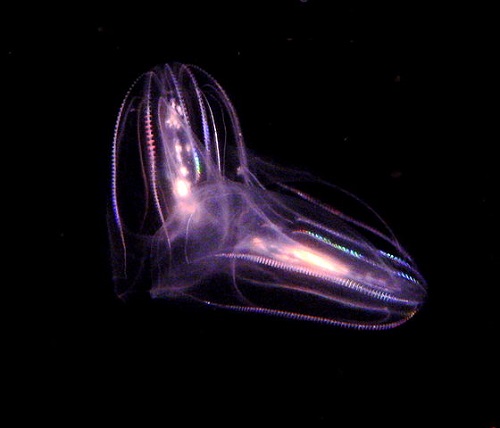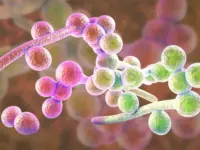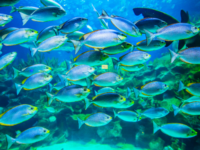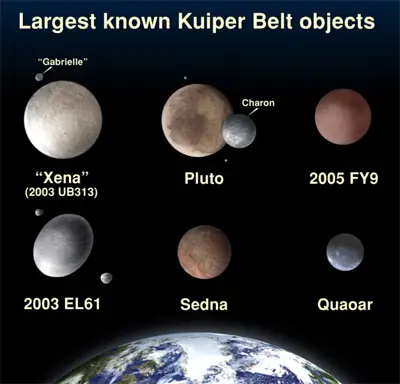Hydra and Obelia are two genera of small aquatic animals of the phylum Cnidaria, class Hydrozoa.
What is Hydra?
Hydra is a genus of small diploblastic freshwater animals from the class Hydrozoa. The representatives of the genus are up to 30 mm long.
The Hydra remains a polyp throughout its entire life and does not have a medusa phase. It has a tubular body with radial symmetry. The Hydra lives attached to the bottom substrate via the so-called basal disc (a simple adhesive foot). The basal disk has gland cells, producing a sticky fluid, which aids the attachment.

At the free (top) end of the body are located up to twelve thin, mobile, hollow tentacles, surrounding animal’s mouth opening. Each tentacle is covered with highly specialized stinging cells called cnidocytes.
The cnidocytes are explosive cells used for defense from predators and prey capture. Upon contact dart-like thread containing neurotoxins are discharged.
The nervous system of the Hydra is a simple nerve net. The animals from this genus have touch-sensitive nerve cells and photoreceptors located in the body wall and tentacles.
The Hydra does not have specialized organs for respiration and excretion, they occur by diffusion through the entire body surface.
The Hydra is a sessile animal, but it can move by:
- attaching its mouth and tentacles to the substrate, relocating and attaching the foot,
- amoeboid motion of the bases,
- tearing of the substrate and floating.
The Hydra reproduces both asexually and sexually, depending on the availability of food. When food is available the Hydra reproduces asexually, by buds which grow to a new individual. When they are mature, they tear away from the mother individual. In conditions of scarce food sexual reproduction occurs.
Hydra is a predator, feeding mainly on aquatic invertebrates like Daphnia and Cyclops.

What is Obelia?
Obelia is a genus of diploblastic mainly marine animals from the class Hydrozoa. It has both polyp and medusa phases.
The Obelia is a sedentary colonial animal. The colony is attached to the substrate via the so-called hydrorhiza. From the hydrorhiza begins a vertical branching stem called hydrocaulus, on which are located the polyps (feeding and reproductive). Polyps have a tubular body with radial symmetry.
The Obelia is covered by yellow chitin exoskeleton, secreted by the ectoderm.
The feeding polyps are similar to Hydras. At the top of the body is located the mouth, surrounded by about twenty-four tentacles. The tentacles are solid, filled with endodermal cells. The tentacles and the mouth are covered with nematocysts.
The Obelia is a sessile colony and does not move from one place to another. However, its sexual generation, the medusa, is moving as a part of the plankton.
The Obelia reproduces both asexually and sexually. Asexual reproduction occurs when shoots of the hydrocaulus slip out from the colony, float away, attach and develop to a new colony.
The sexual stage of the Obelia is the medusa, developing as buds on the reproductive polyps. The medusa looks like a small jellyfish (3 mm in diameter). Initially, it is a part of the colony, but later it separates.
The Obelia does not have special organs for respiration and excretion.
The nervous system of the Obelia is a nerve net. Sensory cells are located mainly on the upper section of each polyp. The nervous system of the medusa is similar, but it has two nerve rings – one outer and one inner nerve ring. The polyps have no sense organs, while the medusa possesses marginal sense organs (statocysts).
Obelia is mostly carnivorous, feeding on small crustaceans and nematodes.
Similarities Between Hydra and Obelia
The similarities between the Hydra and the Obelia are as follows:
- Hydra and Obelia are small diploblastic water animals of the phylum Cnidaria, class Hydrozoa,
- Hydra and Obelia are sedentary animals,
- Hydra and Obelia have tentacles around the mouth,
- Hydra and Obelia have cnidocytes, containing nematocytes to capture prey and for defense.
- Hydra and Obelia do not have special organs for respiration and excretion,
- Hydra and Obelia reproduce both asexually and sexually.
Difference Between Hydra and Obelia
1. Habitat
Hydra:
Hydra inhabits freshwater habitats.
Obelia:
Obelia inhabits both freshwater and marine habitats.
2. Solitary/Colonial
Hydra:
Hydra is a solitary polyp animal.
Obelia:
Obelia is a colony of interconnected polyps.
3. Size
Hydra:
Hydras are up to 30 mm long.
Obelia:
Obelias are up to 25 cm long.
4. Exoskeleton
Hydra:
Hydra does not have an exoskeleton.
Obelia:
Obelia is covered by yellow chitin exoskeleton, secreted by the ectoderm.
5. Tentacles
Hydra:
Hydra has up to 12 hollow tentacles.
Obelia:
Obelia has up to 24 solid tentacles.
6. Nervous system
Hydra:
The nervous system of the Hydra is a simple nerve net. The Hydra does not have sense organs.
Obelia:
The nervous system of the Obelia is also a nerve net. The nervous system of the medusa is similar, but it has two nerve rings. The polyps have no sense organs, while the medusa possesses marginal sense organs (statocysts).
7. Medusa
Hydra:
Hydra does not have a medusa form.
Obelia:
Obelia’s sexual stage is medusa.
8. Mobility
Hydra:
Hydras are sessile animals, but the polyps are able to move and change their location.
Obelia:
Obelia’s colony is sessile, medusas are part of the plankton.
9. Sexual Reproduction
Hydra:
Hydras reproduce sexually by the formation of gametes.
Obelia:
Obelia’s sexual reproduction occurs in the medusa.

Summary:
- Hydra and Obelia are small diploblastic water animals of the phylum Cnidaria, class Hydrozoa.
- Hydra inhabits freshwater habitats, while Obelia is mainly marine species.
- Hydras are up to 30 mm long solitary polyp animal, while Obelia is up to 25 cm long colony of interconnected polyps.
- Hydra does not have a medusa form and reproduces sexually by the formation of gametes. Obelia’s sexual stage is medusa.
- Hydras are sessile animals, but the polyps are able to move and change their location. Obelia’s colony is sessile; medusas are part of the plankton.
Author: Dr. Mariam Bozhilova
Dr. Mariam Bozhilova has a Master’s degree in Ecology and PhD in Botany. Her main professional interests are in the fields of ecology, biology and chemistry. She has more than 10 years of professional experience in scientific research and environmental consultancy.












Leave a Reply